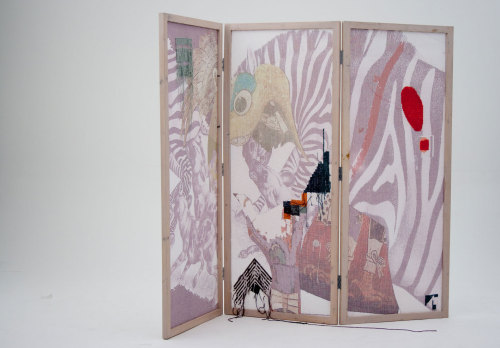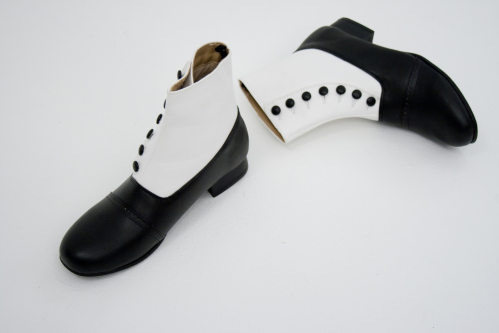Patricidal Film Making
In her recent film Game Keepers Without Game, Emily Wardill takes on the twin daddies of anti-narrative film-making and Freud’s Oedipal modeling of the subject – with rewarding yet disorienting results, writes Maija Timonen
Emily Wardill's new film Game Keepers Without Game takes as its starting point a 17th century Spanish play Life is a Dream by Pedro Calderón de la Barca, transporting it to contemporary London. In the film, the play's narrative becomes the site of class-struggle and perhaps even of revolutionary violence. Its protagonist traverses a course that leads from a random act of violence in the beginning, through a rebellious destruction of the family home and its middle-class paraphernalia, to the killing of the Father. If the play already had the overtones of an Oedipal scenario - it concerns the confrontational relationship between a father and a son (king and prince), and ascendancy - the film both completes and complicates this potential. Wardill introduces a violent ending not present in the play, but also a gender reversal: the son is now a daughter.

All images: Emily Wardill, Game Keepers Without Game, production still, video, 76 minutes, 2009.
Image: Polly Braden, Courtesy the artist, Fortescue Avenue/Jonathan Viner, STANDARD (OSLO) & Altman Siegel © Emily Wardill
The film brings a conventional narrative approach together with a more formally oriented one. Its engagement with politics can also be tracked along these lines. The story foregrounds the charged topic of social exclusion, which lends the film its kitchen sink overtones. The way the story is conveyed in turn employs deconstructive means and a formal language of structuralist filmmaking. With it, a second political agenda is set into play. Instead of reasserting a reductive juxtaposition between a politics of form and political ‘content', Wardill manages to engage it to productive effect. The two conventions played with enter into a dialectical relationship, and despite the failures of their respective politics, provide the occasion for something beyond those failures to emerge. Their relationship not being quite equal, it nevertheless furnishes the work with a heightened sense of reflexivity, methodological as well as subjective.
The film tells the story of Stay, a girl placed into care by her parents when her violent behaviour becomes too much for them to handle, and tracks her progress as she negotiates her position within different habitats. The artificial and fragile safety of the family home is set against the incarceration of life in care and with the freedom of financial independence sought from it in ‘clipping', an activity of ‘attracting mates with the promise of sex with the purpose of stealing their money'. It is through this activity that Stay first encounters her father and is introduced to the possibility of being rehabilitated to the symbolic order of the family. The incestuous tensions of this encounter are carried forward in the film, as is the commercial determination of social interactions foregrounded by it. Stay and her father barter over the amount of money he should pay her for her company. In Calderón's play the registers of free life and prison that Stay navigates are overlaid with the figures of dream and reality. Signs of varying levels of consciousness run also through the film's interweaving of psychotropic medication and commodity fetishism. Stay comes on and off her meds while the family as a whole floats in a delirium of subject-like objects.
The film stages its somewhat sociologically formulated class questions around ‘consumer choices'. The polite green politics and design furniture of the middle-class parents and son are juxtaposed with the Feast ice cream and ‘crisp white tracksuit' of the daughter - she is disruptive not just because of her overtly violent behaviour but also through the challenge her consumer profile presents to the political correctness and aesthetic piety of the family. The Calderón play revolves around questions of free will and fate, and this bears relation to the film's treatment of class-struggle. The fact that the choice behind Stay's actions is compromised by her fragile mental health and heavy medication, could be read as siding with the rather bleak view that the only form of resistance possible arises from the pathology induced by capitalism - either a rampant consumerism or involuntary psychotic violence.i On the other side of this fatalism, the evocation of notions of choice and predetermination could also contain a critique of the illusory omnipotence of modern free will as manifest in meritocratic ideology. The notion of deserved wealth, and its counterpart, earned poverty, overshadows the tug-of-war between the family and their cuckoo/magpie daughter. Penalties ensue from her failure to adapt to the middle-class lifestyle. The story sees Stay taken out of care only to be spirited back in after a violent outburst. Her final effort to re-enter the family also carries dramatic consequences.

There is even a potential feminist angle to the mixture of issues dealt with in the film - it is surely not accidental that the son from Calderón's play is made a daughter, and that instead of eventually accepting God and family as her 17th century counterpart did, she puts an axe in the head of their representative. This gender reversal presents something purposefully self-defeating about the definition given to the Oedipal scenario by the completion of its murderous course. Being arguably an inadequate representation of the libidinal initiation of women, or of their subject formation, the Oedipal scenario in the film could point to a persistent difficulty in finding an articulation for female subjectivity. The fact that the woman in question is not just an individual subject but in some ways stands in for the working-class extends this difficulty. The limits of figuring social relations according to psychic structures become clear through the latter's tendency towards a tragic resolution. What this framing is able to convey though, is a more personal dimension to the story. Stay comes to be read as, if not quite Wardill's alter-ego, then perhaps as her avatar. The virtual violence of the film is enacted from above, and provides an intensified expression for its formal battle.
Though Game Keepers Without Game seems sincere in its willingness to engage with the topics it puts forward they are in many ways upstaged by its formal literacy and its engagement of the traditions of structural film. Scenes with extreme close-ups that see objects and people abstracted into textures are reminiscent of Peter Gidal's works in which the camera zooms in to destroy all narrative information.ii The degree of self-reflection on its recycling of an aesthetic (that could risk becoming an aestheticisation of its politics) provides one measure of the films success. Behind its more explicitly stated questions of the way class identity is played with and inscribed in representation, lie considerations of the relation of these questions to the film's own consumption of aesthetic traditions. The film comes across as very aware of the risk of its own possible fetishisation of the image, and this is manifest in the way images in it shift categories. A constant and subtle recontextualisation carries the flow of images forward and reflects on the complex power relations tied to their significations. While the Oedipal drama gets injected with class-relations, the aesthetics of structural film diffuse into reproductions of commercial imagery.
One of the scenes seems to allegorise the film's bringing together of a conventionally narrative register with conventions of experimental film-making and relates them to the Oedipal framework. The voiceover tells that the father is trying to assemble a mind-map of Stay's life, to build a coherent picture of it, if you will, but certainly to subject it to a cognitive model that he can have control over. When they first encounter each other and before Stay is aware of who he is, the father tells her of this mind-mapping activity and how he employs it in his profession as a writer. She suggests it is like a way of reading someone's mind and starts to describe voices inside her head, seemingly narrating her own ‘mind-map'. The path it follows begins logically enough, but its co-ordinates soon become cryptic and her speech drifts into obscurity. The meaning of this corrosion of sense is ambiguous. The incomprehensible, but subjective and creative map that Stay narrates could be read as a snapshot of the confusion at the core of subjectivity modelled on the irrational rationality of its surroundings. On its flipside is the radical potential of the nonsensical or even of wilful obfuscation. This model of resistance does not simply align with an anti-narrative stance - that much is clear - but poses itself against a symbolic order that encompasses that stance. In some ways, what the film is forced to do is to grapple with two poles of authority. One is the patriarchal language of the totalising mind-map and of the traditionally narrative - the other is the language of the other father, the anti-narrative aesthetic traditions pressing down on the film. The complexity of this negotiation is visually manifest. Situations become deconstructed into objects, and their meaning dissipates in the process. There are also points at which objects converge into situations and acquire new meanings. Wardill herself sees the film as a sculpture. The shape in which this sculpture extends into space could perhaps be telling of the motivations behind it. Sections of the film appear like a mobile: parts suspended in air but constantly changing their positioning in relation to each other in an effort to defy definition.
In some ways the film operates as an impossible spatial object. Early on the voiceover describes the house the protagonist family lives in, and how it appears humble from the outside but in fact sports ‘17 foot' high ceilings on the inside. The logic of this disproportion is inscribed throughout the film. A tension between what can be housed by the baroque detail of the narration and what by the modernist minimalism and abstraction of the images - repeating the relationship of Calderón's Baroque era play and more recent formal traditions mined by Wardill - coincides with an economy of contradictory scale. References are made to the advertising paradigm that presents larger than life M&S food, which functions by telling you that what you see is more than it appears to be. The press release for the film extends this play on the notion of the culinary (familiar from Brecht) and says that the people and objects in it are displayed like airplane food - no item touching one another. Characters and/as things sit cocooned by the white studio backdrop, their integrity disturbed only by the implied violence of their words and by off-camera enactions of violence, heard but unseen. Towards the end of the film, the images begin to career away from this counter-sensuous order. The dismembered, detached bodies and their counterparts the floating objects, which co-populate a large part of the film, come to fill the screen and the texture of skin and fabrics reaches out to the viewer. This point of contact seems to have dramatic consequences. It catalyses a scene of incestuous sex involving Stay and her brother Gallant, which in its own turn acts as a motor for the conclusion of the film: the murder of the father.
The connection forged between the two remains compromised and limited. As if a wry analogy of the audience reached by avant-garde film, it is only ever intra-familial, and in keeping with the pre-dominance of taste as a measure for the cohesion of that family, mediated by the commercial fingerprint of the siblings about to fuck. The dialogue between the brother and sister that leads to the communion is on the one hand natural and intimate, they sound semi-distracted, hanging out. On the other hand it is shot through with references to the consumption that defines their identities - it teeters on the brink of sounding like a market research focus group: likes and dislikes are being reeled out, tastes weighed up against each other. This impression is further complicated by Wardill's voice coming in, instructing an actor to speak like a little girl. Amidst the barrage of signification an authorial presence asserts itself.

This assertion is made against the backdrop of complex visual histories, and perhaps in an effort to distinguish itself from their representatives. The intermingling of the Gidal-esque framings that obscure a full view of events, and advertising images that bring textures so close that one is left confused or disgusted by what one is supposed to desire, is revelatory to this effect - at points the film almost seems to propose a view on structural film as food porn. Aside from this extreme interpretation, embedded in the overlapping of these registers is the rather more mundane realisation that commercial representation often produces its own alienation effects. This could be rephrased as a question about the contemporary validity of the thought provoking function that distanciation and the destruction of representational content had, for example, for Gidal. Is the new form of structural film a kind of accidental nausea? The failure of advertising to prescribe desire, ironically, consummates efforts to interrupt the ideologically tainted desire of commercial cinema.
In a way, Wardill could be seen as gently killing off her own intellectual and creative fathers. But in so doing, she also salvages their project and finds new meanings for what structural film could be beyond its historical canon. The film manages more than just a postmodern lament on the alienation of formal tropes and the theoretical projects that once surrounded them. The way its form - the intricate relations of its images, musical soundtrack and voiceover - allows its themes to be experienced, and even the way it fails at times by being either too explicit or a little bit lost in its own intuitiveness, add to a very sympathetic film and holds forth for modernist aesthetics. With the recent popularity of philosophical aesthetics in the art world having done little to broaden the scope of artists' real practical engagement with the notion of politics of form, the sensitivity and conscientiousness with which this film treats its medium is not just refreshing, it is to be applauded.
Maija Timonen <maijatimonen AT gmail.com> is a writer and filmmaker based in London
Info
Emily Wardill's Game Keepers Without Game ran 10 February - 27 March at The Showroom, London.
Footnotes
i Thanks to Ben Seymour for discussion around the topic of class and individuation.
ii Aside from the extreme close-ups, an interesting connection could be made with Gidal's Room Film 1973, which depicts a domestic space in a way that strips it of all that signals it as such, of personal signs of inhabitation. The domestic space of Wardill's film is only ever graphically depicted in the voiceover, and the emptiness not only of the domestic life of the family portrayed, but also of the idea of domestic bliss or the institution of family in general, is articulated through the incompatibility of the sparse images with such an idea.
Mute Books Orders
For Mute Books distribution contact Anagram Books
contact@anagrambooks.com
For online purchases visit anagrambooks.com






